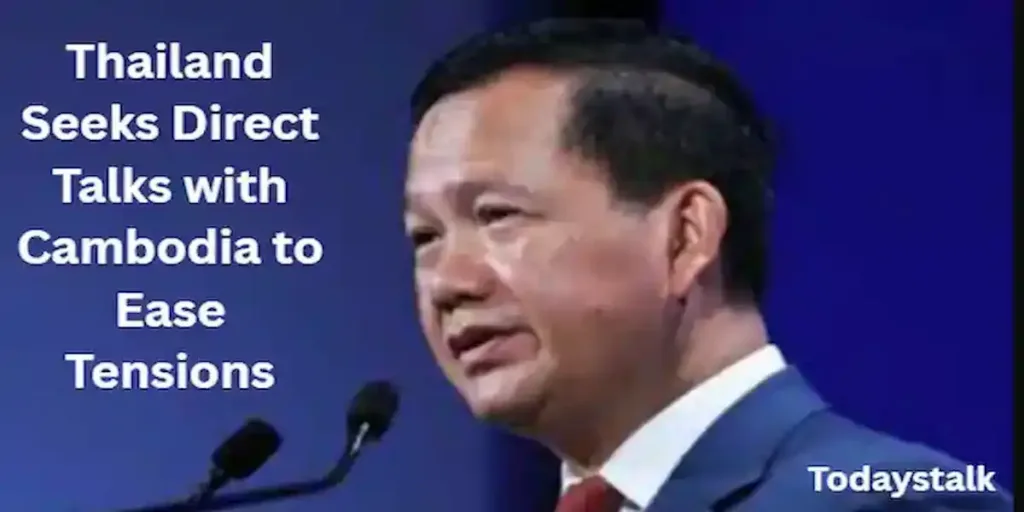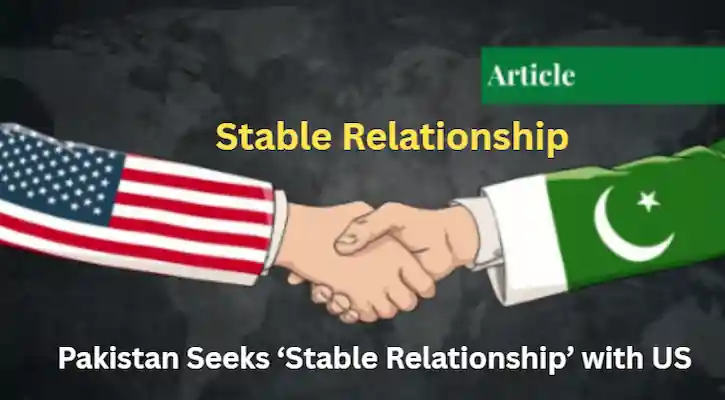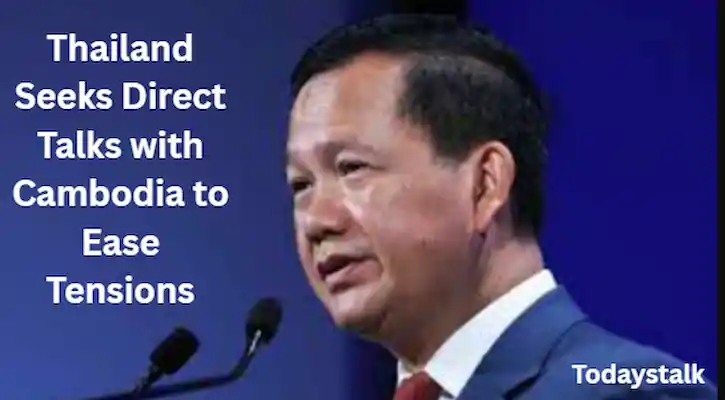As Thailand seeks direct talks with Cambodia, it reflects a commitment to regional peace, stability
In a significant diplomatic development, Thailand seeks direct talks with Cambodia as tensions rise along their shared border.
This move signals Thailand’s commitment to resolving disputes through dialogue, preserving regional stability, and strengthening bilateral cooperation at a critical time for Southeast Asia.
Why Thailand Is Seeking Direct Dialogue
Recently, tensions have escalated over unresolved border demarcation issues, particularly around disputed areas that have seen military build-ups from both sides.
Local residents in border regions have reported concerns over safety and trade disruptions, urging both governments to find a peaceful resolution.
Acknowledging these concerns, Thailand’s foreign ministry emphasized that Thailand seeks direct talks with Cambodia to avoid misunderstandings that could spiral into larger conflicts.
Rather than letting tensions escalate, the government believes direct communication will help prevent incidents while creating a framework for sustainable solutions.
Historical Context of Thailand-Cambodia Disputes
Thailand and Cambodia have a long, intertwined history with moments of cooperation and friction.
Border disputes, including those near the Preah Vihear Temple, have historically sparked diplomatic challenges.
However, both nations have often relied on bilateral discussions and regional forums under ASEAN to manage disputes without jeopardizing broader ties.
At this juncture, Thailand aims to reinforce a cooperative spirit while seeking clarity on contentious issues that have resurfaced.
Moreover, as Thailand seeks direct talks with Cambodia, it positions itself as a proponent of ASEAN’s core principle of conflict resolution through peaceful dialogue.
Potential Economic and Social Implications
Border regions between Thailand and Cambodia are vibrant with cross-border trade, cultural exchange, and family ties.
Any prolonged tension could threaten trade routes, disrupt local economies, and impact the livelihoods of communities dependent on cross-border movement.
Direct talks are expected to reassure traders, local businesses, and border residents that both governments are prioritizing stability.
Additionally, clear communication can help prevent incidents that could escalate, ensuring that the economic and social connections between the two nations remain intact.

Cambodia’s Initial Response
While Thailand has taken the first step in proposing direct dialogue, Cambodia’s foreign ministry has indicated an openness to discussions while emphasizing the need for clear frameworks to avoid future disputes.
Cambodian officials stressed the importance of respecting existing agreements while remaining open to reviewing contentious points for mutual benefit.
The possibility of high-level meetings in the coming weeks has been discussed, with both sides expected to send diplomatic teams to finalize the agenda for talks.
This approach highlights that Thailand seeks direct talks with Cambodia not only to ease tensions but also to set a precedent for constructive engagement.
Role of ASEAN in Supporting Talks
Although Thailand emphasizes direct bilateral dialogue, ASEAN’s potential support cannot be overlooked.
The regional bloc has mechanisms in place to facilitate dialogue among member states, and its quiet diplomatic backing could help ensure talks proceed constructively.
ASEAN’s focus on peace and stability in the region aligns with Thailand’s move, underscoring the bloc’s relevance in managing intra-regional disputes without external interference.
Looking Ahead: What Direct Talks Could Achieve
If successful, direct talks could lead to new frameworks for managing border areas, including joint patrols, trade facilitation, and community-level cooperation projects.
They may also set a positive precedent for other nations in the region facing border challenges, showcasing diplomacy as the preferred route for resolution.
Furthermore, these talks could open pathways for broader cooperation, including environmental management in border areas, anti-smuggling initiatives, and tourism collaborations that benefit communities on both sides.
Conclusion: A Diplomatic Step for Regional Stability
As Thailand seeks direct talks with Cambodia, it reflects a commitment to regional peace, stability, and practical cooperation in Southeast Asia.
The move prioritizes dialogue over confrontation, acknowledging that tensions are best resolved through mutual understanding and direct communication.
In a region where border issues often threaten to destabilize communities, Thailand’s approach could serve as a model for diplomatic conflict resolution while reinforcing ASEAN’s principles of unity and peace.
Both nations now have an opportunity to transform a point of tension into a pathway for strengthened ties and shared prosperity.






 Bitcoin
Bitcoin  Ethereum
Ethereum  XRP
XRP  Tether
Tether  Solana
Solana  TRON
TRON  Dogecoin
Dogecoin  Litecoin
Litecoin